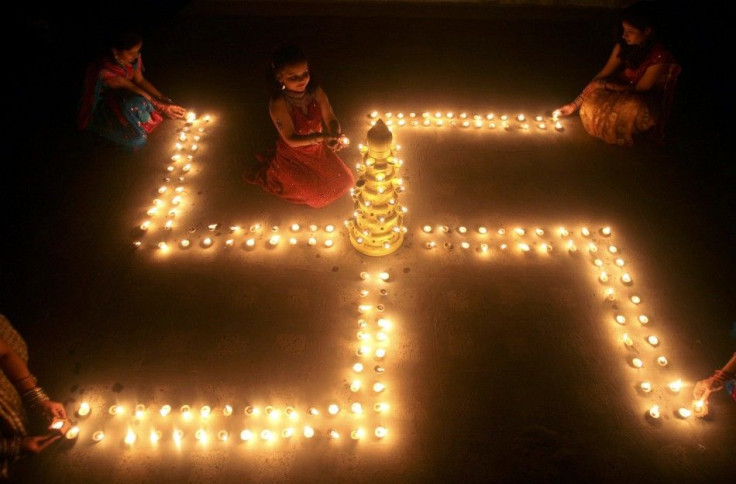Norway Massacre: The Bizarre Link Between European Fascists and Hindu Nationalists in India

In his rambling 1500-page “manifesto,” Norwegian mass killer Anders Behring Breivik repeatedly made references to India and his admiration for its Hindu Nationalist movement.
While it may seem strange for a far-right Western European to praise India’s Hindus, it is actually nothing new.
Ever since Adolf Hitler adopted the (Hindu) swastika symbol for his National Socialist (Nazi) movement in 1920s Germany, there has existed a bizarre and confounding link between far-right European groups and the Hindu Nationalists in India.
At the core of this peculiar connection lies with the highly controversial (and frequently rejected) notion of an ancient “Aryan” race that conquered India thousands of years ago and were also allegedly related to the peoples of northern Europe.
Almost ninety years after Hitler’s “Beer Hall Putsch” in Munich, the Nazi affiliation with Hindus persist: in Breivik’s document [“2083: A European Declaration of Independence”], he frequently refers to Hindu Nationalists in India.
Breivik apparently has found some “common ground” with right-wing Hindu nationalists over their mutual contempt and fear of Muslims.
Indeed, Breivik expressed his explicit support for Hindutva, a comprehensive umbrella term that encompasses the Hindu nationalist movement in India which regards Islam as a “foreign element” in India and must be removed from the society.
“India will continue to wither and die unless the Indian nationalists consolidate properly and strike to win,” Breivik wrote.
“It is essential that the European and Indian resistance movements learn from each other and cooperate as much as possible. Our goals are more or less identical.”
He added that he supports “the Sanatana Dharma [the original descriptive term for Hinduism] movements and Indian nationalists in general.”
The manifesto even includes an essay written by an Indian man named Shrinandan Vyas who contended that Muslim invaders perpetrated“genocide” of Hindus in the Hindu Kush region of contemporary Afghanistan.
This concept of “genocide” is shared by many Hindu Nationalists in India,
Breivik seems obsessed with how the presence of Muslims in any society leads to violence, subjugation, domination and a sharp decline in the population of other peoples, citing several historical examples, including Pakistan and East Pakistan (now Bangladesh) following the partition of British India in 1947.
Writing expansively about Hindu nationalism, Breivik declared: “Saffronization is a political neologism [after the saffron robes of the Hindu clerics], used to refer to the policy of right-wing Hindu nationalism [or Hindutva] which seeks to make the Indian state into a ‘Hindu nation’ and its Sikh, Buddhist and Jain minorities incorporated into Hinduism. These nationalist movements are also called Sanatana Dharma movements. A related term, the Saffron Brigade, is used as a descriptor of people and organizations in India that promote Hindu nationalism such as the Sangh Parivar by their critics, who allege a militant Hindu agenda. The Sanatana Dharma movements or Hindu nationalists in general are suffering from the same persecution by the Indian cultural Marxists as their European cousins.”
Breivik uses the word “Aryan” several times in his manifesto, making his racial world-view abundantly clear.
However, it is unknown if the Norwegian extremists had any contact or correspondence with any right-wing Hindu nationalists in India. Historically, far-right figures in Europe have had little to do with Indian nationalists, although there have been exceptions.
On the flipside, before World War II (and prior to the revelation of the horrors of the Holocaust), many Indian Hindu nationalists openly expressed their admiration for Hitler and Nazism.
In his 1939 manuscript "We", Madhav Sadashiv Golwalkar, the leader of Rashtriya Swayamsevak Sangh, a prominent Hindu Nationalist organization, wrote: "To keep up the purity of the Race and its culture, Germany shocked the world by her purging the country of the Semitic races -- the Jews. Race pride at its highest has been manifested here. Germany has also shown how well-nigh impossible it is for races and cultures, having differences going to the root, to be assimilated into one united whole, a good lesson for us in Hindustan to learn and profit by."
READ: Norway Massacre: Prime Minister Says Attacks a Catalyst for Increased Interest in Politics
© Copyright IBTimes 2024. All rights reserved.











